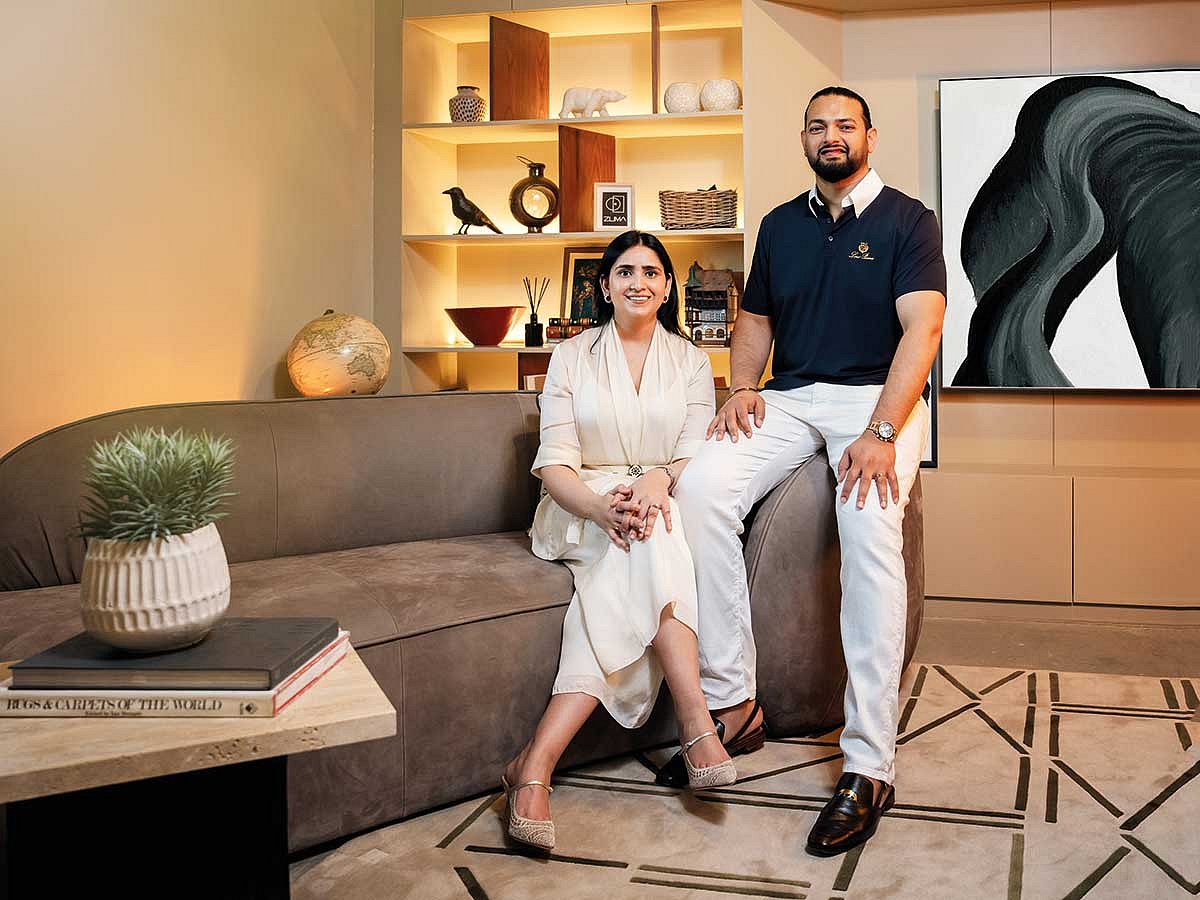From Carpets to Iconic Spaces: How ZUMA earned global recognition
ZUMA’s design identity blends geometry, craft &cultural cues with founders’ shared vision

ZUMA has made its mark by doing what many attempt but few master, refining a design language until it becomes instantly recognisable.
For founders Zubin Rao and Mallika Rao, ZUMA’s rise didn’t hinge on a single breakthrough moment. Zubin remembers the shift as a steady ascent. “There wasn’t a single moment, but rather a progression,” he says. “As we began working on more visible and iconic projects, we saw our work being genuinely appreciated.”
The attention wasn’t only from clients. The larger design community began noticing the carpets, the furniture, the precision, the craft. “That’s when it felt like ZUMA was no longer just a boutique studio,” he says. “It had earned its place.”
Mallika felt the same momentum, though it arrived with a twist. She recalls designers with decades of experience suddenly imitating ZUMA’s work. “People who have been in the business far longer than we have were now copying our designs,” she says. Some even came to the showroom pretending to be clients, taking photos and reposting ZUMA’s catalogues with their own logos. “At first, it bothered us,” she says. “But then we realised: if others are trying to replicate what we’re doing, then clearly something about our design language is resonating.” For her, it was a moment of validation.
Design dialogue
Working on spaces such as royal palaces or the Museum of the Future brings a different kind of responsibility. They say the feeling is mostly gratitude and motivation. They enter every major commission with the same compass: authenticity, functionality, and clarity of purpose. “We truly believe that form follows function,” they say, and the design process always begins by understanding how a space behaves before they decide how it should feel. The goal is simple: create something “unique, iconic and well suited to the project.”
The design dynamic is one of ZUMA’s strongest signatures. Zubin describes his approach as architectural, rooted in “structure, formality, geometry and precision.” Mallika brings softness and intuition. “She breaks the seriousness of something I’ve designed to make it warm, welcoming or more expressive,” he says. In turn, he brings rigour to her spontaneous ideas. The tension is productive. “The strength lies in finding the midpoint,” Mallika says. She believes ZUMA works because their designs carry both energies, the bold structure of his vision and the emotional detail of hers.
The studio’s expansion beyond carpets wasn’t accidental. “It was very much the plan from the beginning,” Zubin says. His early work as an FF&E specialist exposed him to the art of hand-tufted carpets, a craft he spent years studying and shaping through the lens of architecture.
From the start, ZUMA was meant to be a full design consultancy: carpets, interiors, furniture, fit-outs. The carpets simply became the anchor.
Their global appeal comes from curiosity rather than trend-chasing. “We are constantly educating ourselves,” Mallika says. Travel fuels their creative intelligence. They absorb mood, movement, and behaviour from the spaces they explore. “We don’t necessarily follow design trends,” she says.
Their modern language stays consistent, but every collection is curated to resonate across cultures. “Each space across the globe needs a carpet,” she says. Their work adapts to functional needs before anything else.
Crafted stories
Some carpets become deeply personal. Zubin mentions Caravan, a piece rooted in the journeys of people who come to the region, build their lives, leave their mark, and sometimes move on. “We translated that movement and human narrative into a carpet,” he says. Others come from direct observation, like Dunes. Zubin recalls going into the desert with the team, studying “the scale, texture, and fluidity of the sand forms,” then translating those impressions into pattern and material. Some pieces hold emotion. Others reflect place. All of them mirror the studio’s way of thinking.
Sustainability at ZUMA comes through craftsmanship rather than slogans. Mallika believes the two naturally complement each other. “Craftsmanship is not just about creating beautiful products but also about preserving traditional techniques,” she says.
They refine their production lines to reduce waste, use natural materials that can be recycled, and invest heavily in artisan training. Their focus remains on creating timeless designs that don’t rely on trends to stay relevant. “For us a quality product is not just measured in value for its aesthetic,” she says, “but also the value addition at each phase.”
Running a company together has shaped their relationship with equal force. Mallika compares it to raising a child. “You are bound to clash in your opinions,” she says. And yet, no one else is as deeply trusted to step in when one needs to step back. Respect and empathy hold the partnership steady. “We both have our strengths,” she says, and experience has taught them to choose their battles with care and prioritise the company’s best interest. “Each time we have been able to play to each of our strengths and work in harmony, the outcome has been phenomenal.”
ZUMA’s story is a blend of precision and emotion, geometry and fluidity, discipline and instinct. It is the rare design partnership where neither voice dominates; instead, they weave together, much like the carpets now unfurled across some of the most important spaces in the world.
Sign up for the Daily Briefing
Get the latest news and updates straight to your inbox
Network Links
GN StoreDownload our app
© Al Nisr Publishing LLC 2025. All rights reserved.